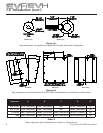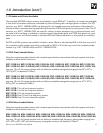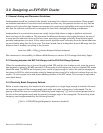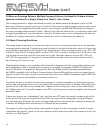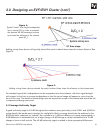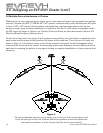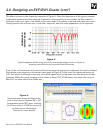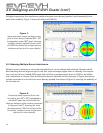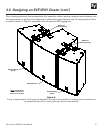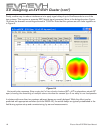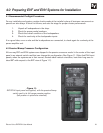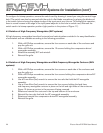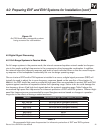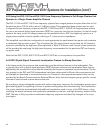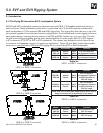
Electro-Voice EVF/EVH User Manual16
At higher frequencies, the interference patterns become more densely packed, which essentially elimi-
nates their audibility. Figure 7 shows this effect at 8,000 Hz.
3.51 Reducing Multiple-Source Interference
Multiple-source interference cannot be eliminated but it can be substantially reduced. Systems which
have radiating devices large enough to hold their rated coverage angles down to relatively low frequen-
cies, such as the horn-loaded EVH series that hold their coverage angles down to 500 Hz, will exhibit
less interference in clusters. Also, doubling the distance between the two systems of Figure 8 produces
multiple interference nulls which are more densely packed than those of Figure 6, reducing the audibility of
the interference.
Figure 7:
Horizontal polar response (blue center
plot) of two closely clustered 60° x 40°
loudspeakers aimed 60° apart, showing
multiple, densely packed off-axis nulls
at 8,000 Hz caused by multiple-source
interference (see text for more details)
3.0 Designing an EVF/EVH Cluster (cont’)
Figure 8:
Horizontal polar response (blue cen-
ter plot) of two 60° x 40° loudspeakers
aimed 60° apart but with double the
distance between grille centers compared
to Figures 6 and 7, showing the more
densely packed 1,250-Hz off-axis nulls
caused by multiple-source interference
(see text for more details)



